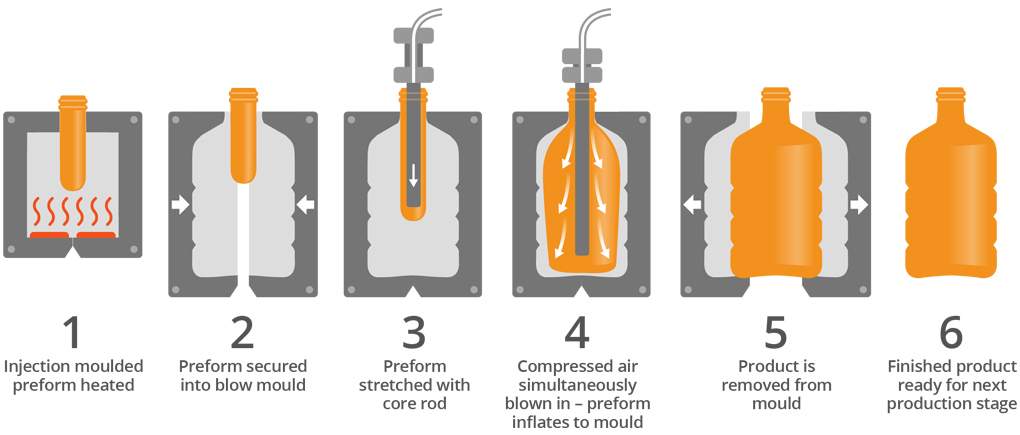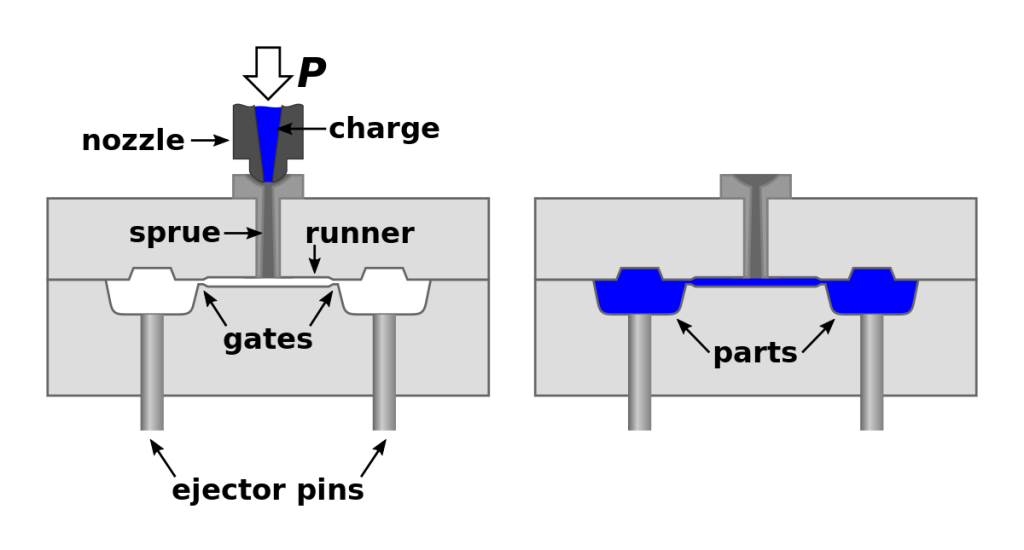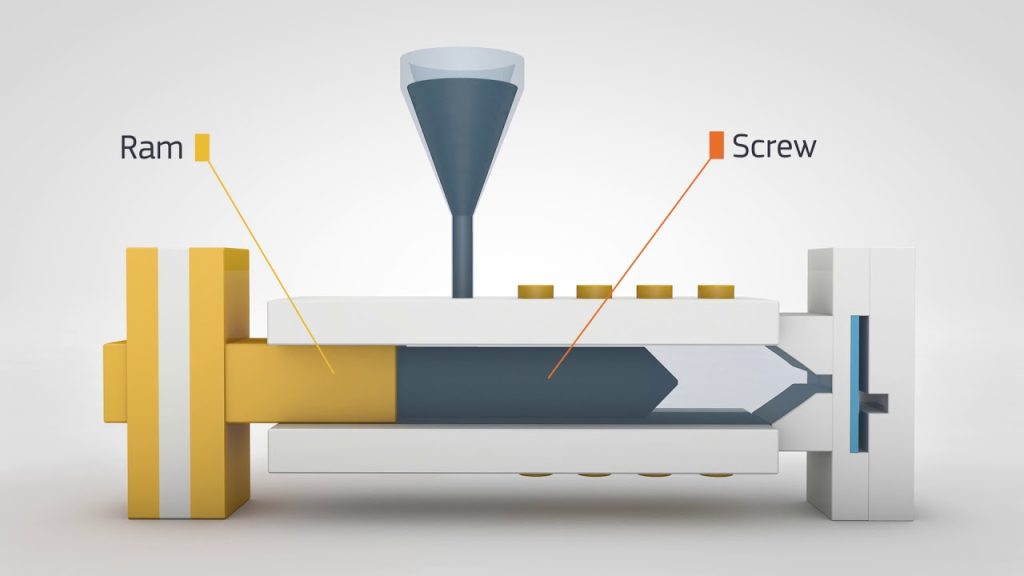Table of Contents
- What Is Injection Stretch Blow Molding?
- Frequently Asked Questions
- What are the advantages of Injection Stretch Blow Molding?
- How does Injection Stretch Blow Molding work?
- What types of plastic can be used in Injection Stretch Blow Molding?
- What are the key considerations when designing a product for Injection Stretch Blow Molding?
- What are some common applications of Injection Stretch Blow Molding?
Injection stretch blow molding is an innovative manufacturing process that has revolutionized the production of plastic bottles and containers. This technique combines the benefits of injection molding and blow molding to create high-quality, durable plastic products with exceptional precision and consistency.
The process begins with the injection of molten plastic into a preform mold, which is then stretched and blown into its final shape using high-pressure air. This allows for the creation of complex shapes and designs that are not possible with traditional blow molding methods. Injection stretch blow molding is widely used in the packaging industry for the production of bottles, jars, and containers for a variety of applications.
What Is Injection Stretch Blow Molding?
Injection stretch blow molding (ISBM) is a manufacturing process used to produce high-quality plastic bottles, jars, and containers. This process involves three main steps: injection molding, stretching, and blowing. ISBM is a highly efficient and cost-effective method of manufacturing plastic containers with consistent wall thickness, exceptional clarity, and excellent strength.
Injection Molding Phase
The first step in the ISBM process is injection molding. In this phase, molten plastic is injected into a preform mold, which is a hollow tube-shaped mold with a particular shape and size. The molten plastic is then quickly cooled and solidified, forming a preform with the desired shape and size. The preform is typically made from polyethylene terephthalate (PET) because of its excellent properties, including strength, transparency, and recyclability.
After the preform is formed, it is transferred to the next phase of the ISBM process, where it is stretched and blown into the final container shape.
Stretching Phase
The second step in the ISBM process is stretching. In this phase, the preform is heated to a specific temperature and stretched to the desired length using a stretching rod. The stretching process aligns the polymer molecules in the preform, resulting in a stronger and more transparent finished product.
After stretching, the preform is then cooled to a specific temperature to maintain its shape and prepare it for the final phase of the ISBM process, blowing.
Blowing Phase
The final step in the ISBM process is blowing. In this phase, the preform is placed in a blow mold, which is a hollow mold with the desired shape and size of the final container. Compressed air is then blown into the preform, causing it to expand and take the shape of the mold. As the plastic cools, it solidifies and forms the final container.
The ISBM process is highly efficient and produces high-quality containers with a consistent wall thickness and excellent strength. Additionally, ISBM is a cost-effective method for producing plastic containers compared to other manufacturing processes.
Benefits of Injection Stretch Blow Molding
There are several benefits of using ISBM to produce plastic containers, including:
- Consistent wall thickness: The ISBM process produces plastic containers with a consistent wall thickness, resulting in a more uniform and aesthetically pleasing finished product.
- Excellent clarity: The stretching phase of the ISBM process aligns the polymer molecules, resulting in a more transparent and visually appealing product.
- High strength: The ISBM process produces plastic containers with exceptional strength, making them suitable for a wide range of applications.
- Cost-effective: ISBM is a highly efficient and cost-effective method for producing plastic containers compared to other manufacturing processes.
- Recyclable: The preform used in the ISBM process is typically made from PET, which is a recyclable material, making it an eco-friendly option for producing plastic containers.
ISBM vs. Other Plastic Container Manufacturing Processes
ISBM is a cost-effective and efficient method for producing plastic containers compared to other manufacturing processes, such as extrusion blow molding and injection molding. Here are some key differences and advantages of ISBM over other plastic container manufacturing processes:
| Process | Advantages |
|---|---|
| Extrusion Blow Molding | Produces larger containers up to 30 liters |
| Injection Molding | Lower cost tooling and faster cycle times |
| Injection Stretch Blow Molding (ISBM) | Produces smaller containers with consistent wall thickness, excellent clarity, and high strength. Also, less material waste compared to injection molding. |
In conclusion, injection stretch blow molding is a highly efficient and cost-effective method of manufacturing plastic containers with consistent wall thickness, exceptional clarity, and excellent strength. ISBM is an eco-friendly option for producing plastic containers as the preform used in the process is typically made from recyclable materials. Additionally, ISBM offers several advantages over other plastic container manufacturing processes, including consistent wall thickness, excellent clarity, and high strength.
Frequently Asked Questions
Injection Stretch Blow Molding is a manufacturing process used to produce high-quality plastic bottles, jars, and containers. It involves the injection of molten plastic into a preform or parison, which is then stretched and blown into the desired shape using a blow mold.
What are the advantages of Injection Stretch Blow Molding?
Injection Stretch Blow Molding offers several advantages over other molding processes. First, it allows for the production of highly precise and uniform parts with minimal material waste. Second, it can be used to produce complex shapes and designs that are difficult or impossible to achieve with other molding methods. Finally, it is a relatively fast and cost-effective process that can be used in high-volume manufacturing applications.
Additionally, Injection Stretch Blow Molding can be used to produce a wide range of plastic products, including bottles, jars, and containers for the food and beverage, pharmaceutical, and cosmetic industries, among others.
How does Injection Stretch Blow Molding work?
The Injection Stretch Blow Molding process begins with the injection of molten plastic into a preform or parison. The preform is then stretched and blown into the desired shape using a blow mold. The resulting product is then cooled and ejected from the mold.
The injection and stretching stages of the process are critical to achieving a high-quality final product. During injection, the plastic is injected into the preform with high pressure and precision. During stretching, the preform is elongated to the desired length and diameter using a stretching rod, which ensures uniform wall thickness and overall shape.
What types of plastic can be used in Injection Stretch Blow Molding?
Injection Stretch Blow Molding can be used with a wide range of thermoplastic materials, including PET, PP, and PE, among others. PET is the most commonly used material for Injection Stretch Blow Molding due to its excellent clarity, strength, and barrier properties.
Other materials, such as PP and PE, are often used for applications that require greater flexibility or chemical resistance. The choice of material depends on the specific requirements of the product being produced.
What are the key considerations when designing a product for Injection Stretch Blow Molding?
When designing a product for Injection Stretch Blow Molding, several key considerations should be taken into account. First, the product should be designed with the molding process in mind, taking into account factors such as draft angles, wall thickness, and parting line placement.
Second, the product should be designed to meet the specific requirements of the application, including strength, durability, and resistance to environmental factors such as temperature and moisture. Finally, the product should be designed to be easily and efficiently produced using Injection Stretch Blow Molding.
What are some common applications of Injection Stretch Blow Molding?
Injection Stretch Blow Molding is used in a wide range of applications, including the production of plastic bottles, jars, and containers for the food and beverage, pharmaceutical, and cosmetic industries, among others.
It is also used to produce a variety of other plastic products, such as automotive components, medical devices, and household goods. The versatility and precision of Injection Stretch Blow Molding make it a popular choice for many different manufacturing applications.
In conclusion, Injection Stretch Blow Molding is a highly versatile manufacturing process used to create a wide range of plastic products. From bottles to containers, this process allows for the production of high-quality products with consistent quality and precision.
With its ability to create complex shapes and intricate designs, Injection Stretch Blow Molding has become a popular choice for businesses looking for a cost-effective and efficient way to produce plastic products. This process also offers several benefits, including improved product strength, resistance to impact, and better clarity.
Overall, Injection Stretch Blow Molding is a valuable process that has revolutionized the plastic manufacturing industry. With its ability to create products that are both functional and aesthetically pleasing, it’s no wonder why so many businesses have turned to this process to meet their production needs.
Request a quote today!
[contact-form-7 id="1578" title="Contact form"]
Please compress the file into a ZIP or RAR file before uploading. Alternatively, send through your RFQ by email.
enquires@unitymanufacture.com






!